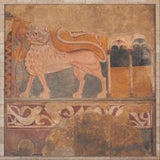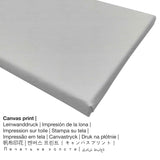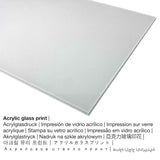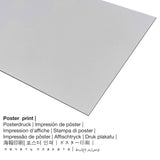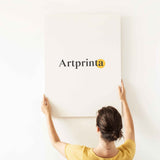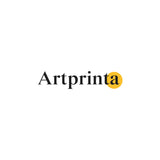This masterpiece Lion was made by the painter Unknown. The original measures the size: Overall: 10 ft, 11 in x 11 ft, (332,7 x 335,3 cm) Overall (top panel): 83 x 132 in (210,8 x 335,3 cm) Overall (lower panel): 48 x 132 in (121,9 x 335,3 cm). Fresco, mounted on canvas was applied by the painter as the technique for the painting. Moveover, this artwork is part of the digital art collection of The Metropolitan Museum of Art, which is one of the world's largest and finest art museums, which includes more than two million works of art spanning five thousand years of world culture, from prehistory to the present and from every part of the globe.. The classic art public domain artwork is provided with courtesy of The Metropolitan Museum of Art, New York, The Cloisters Collection, 1931. Furthermore, the work of art has the creditline: The Cloisters Collection, 1931. On top of that, alignment is in square format and has a side ratio of 1 : 1, which implies that the length is equal to the width.
Order your favorite material
The product dropdown menu provides you with the chance to choose the size and material of your choice. In order match your personal requirements perfectly, you can choose among the following product customization options:
- Aluminium dibond print: Aluminium Dibond prints are prints on metal with an impressive depth - for a modern look and a non-reflective surface. The Aluminium Dibond Print is your best start to art replicas with aluminum. For the Direct Print On Aluminum Dibond, we print the artpiece right onto the aluminium white-primed surface. The bright and white parts of the original artwork shine with a silky gloss but without glow. The colors are bright and vivid, the fine details of the print are crisp, and there’s a matte look you can literally feel.
- The canvas print: A canvas direct print is a printed canvas stretched on a wood frame. Your printed canvas of this masterpiece will allow you to transform your fine art print into a large collection piece like you know from art galleries. The advantage of canvas prints is that they are relatively low in weight, which implies that it is quite simple to hang the Canvas print without additional wall-mounts. A canvas print is suitable for all kinds of walls in your house.
- Poster on canvas material: Our poster print is a printed cotton canvas with a slightly roughened finish on the surface. Please bear in mind, that depending on the absolute size of the canvas poster print we add a white margin between 2-6cm around the print, which facilitates the framing with a custom frame.
- Acrylic glass print: A glossy acrylic glass print, which is often referred to as a print on plexiglass, will turn the original artwork into great home décor and is a great alternative to canvas and aluminidum dibond fine art prints. Your favorite work of art is custom-made with the help of modern UV print machines. With an acrylic glass art print contrasts and also granular details will be identifiable due to the fine tonal gradation. Our plexiglass with real glass coating protects your selected fine art print against light and external influences for many years to come.
Legal disclaimer: We strive to describe the art products with as many details as possible and to demonstrate them visually. However, the tone of the print products and the imprint can vary somehwat from the presentation on the device's monitor. Depending on the settings of your screen and the nature of the surface, color pigments might not be printed as realisitcally as the digital version on this website. Because our fine art prints are processed and printed manually, there might as well be slight differences in the size and exact position of the motif.
Article background info
| Product categorization: | wall art |
| Reproduction: | digital reproduction |
| Production process: | UV direct print (digital printing) |
| Origin of the product: | made in Germany |
| Stock type: | production on demand |
| Proposed product use: | wall decoration, art collection (reproductions) |
| Orientation of the image: | square format |
| Side ratio: | 1 : 1 |
| Interpretation of the aspect ratio: | the length is equal to the width |
| Available material variants: | acrylic glass print (with real glass coating), metal print (aluminium dibond), poster print (canvas paper), canvas print |
| Canvas print (canvas on stretcher frame) size options: | 20x20cm - 8x8", 30x30cm - 12x12", 50x50cm - 20x20", 70x70cm - 28x28", 100x100cm - 39x39", 150x150cm - 59x59", 180x180cm - 71x71" |
| Acrylic glass print (with real glass coating) sizes: | 20x20cm - 8x8", 30x30cm - 12x12", 50x50cm - 20x20", 70x70cm - 28x28", 100x100cm - 39x39", 150x150cm - 59x59", 180x180cm - 71x71" |
| Poster print (canvas paper) size options: | 30x30cm - 12x12", 50x50cm - 20x20", 70x70cm - 28x28", 100x100cm - 39x39" |
| Dibond print (alumnium material) variants: | 20x20cm - 8x8", 30x30cm - 12x12", 50x50cm - 20x20", 70x70cm - 28x28", 100x100cm - 39x39" |
| Picture frame: | not available |
Work of art specs
| Piece of art title: | "Lion" |
| Classification: | painting |
| Generic term: | classic art |
| Temporal classification: | 13th century |
| Created in: | 1200 |
| Approximate age of artwork: | 820 years old |
| Painted on: | fresco, mounted on canvas |
| Original dimensions (artwork): | Overall: 10 ft, 11 in x 11 ft, (332,7 x 335,3 cm) Overall (top panel): 83 x 132 in (210,8 x 335,3 cm) Overall (lower panel): 48 x 132 in (121,9 x 335,3 cm) |
| Exhibited in: | The Metropolitan Museum of Art |
| Museum location: | New York City, New York, United States of America |
| Website: | www.metmuseum.org |
| License: | public domain |
| Courtesy of: | The Metropolitan Museum of Art, New York, The Cloisters Collection, 1931 |
| Artwork creditline: | The Cloisters Collection, 1931 |
Structured artist metadata
| Artist name: | Unknown |
| Professions of the artist: | painter |
| Classification: | old master |
© Copyright - intellectual property of - www.artprinta.com (Artprinta)
Artwork specifications from the museum (© Copyright - by The Metropolitan Museum of Art - www.metmuseum.org)
By portraying this lion with his muscles taut, his fur standing on end, and his gaze intense, the artist conveyed the power of this snarling big cat. Medieval beasts, whether real or imaginary, were often imbued with symbolic meaning, as they are in animal fables today. It is not always possible, however, to reconstruct their specific intention in a given monument, and such beasts could be for “aesthetic delight,” as one thirteenth-century archbishop commented. The monastery from which this fresco comes was abandoned in 1841.

